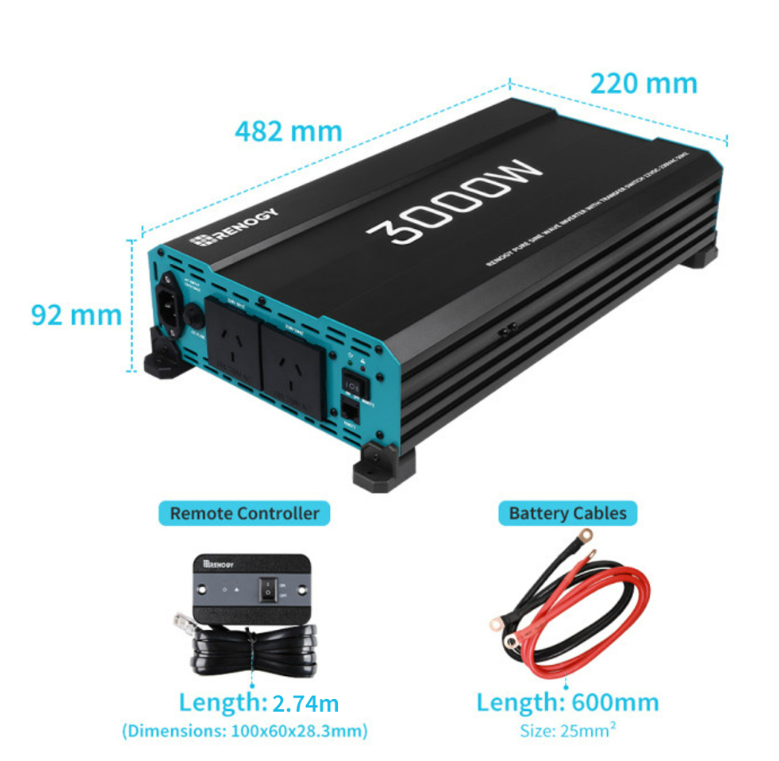Photovoltaic in a condominium: what you need to know

In recent years, photovoltaics in Australia has experienced strong growth. The increase in the number of installations is mainly due to the fact that solar energy allows you to save on bills thanks to self-consumption, which can reach 90% with a photovoltaic system with storage.
Not only the owners of detached houses and villas but also the tenants of condominiums have begun to take an interest in solar energy and install photovoltaic systems on the roofs of condominium buildings. Furthermore, 12V solar panels in condominiums have had a boom thanks to the Condominium Reform which made it possible to install photovoltaic systems inside these buildings.
Photovoltaic system in a condominium: centralized and private
Centralized photovoltaic system
Installing portable solar panels on the roof of an apartment building in a centralized system can benefit all residents. In fact, it is possible to use the energy of this residential photovoltaic system to operate the lights in the common areas, the lift and the gates without depending on the Energy Services Manager (GSE), favouring a reduction in common energy costs.
In order to install a centralized photovoltaic system, it is necessary:
-
- Discuss it during a condominium meeting
-
- Get a favourable vote from at least half of the condominiums
It should be emphasized that the condominiums against it will not have to bear the expense but will not be able to benefit from the advantages and concessions.
The costs of the entire expenditure will be shared among those who have given their consent for the installation of the system, and these will be able to take advantage of the tax deductions offered by the State, such as the Restructuring Bonus or the Superbonus 110.
Furthermore, if the shared system produces excess energy during the day, you can opt to invest in a photovoltaic system with storage. This allows you to use energy even during the night without requiring electricity from the grid. The part of the non-accumulated surplus energy can be sold to the grid with the On-the-spot metering mechanism.
What cannot be done with a centralized system is to use the energy produced by the photovoltaic system for a single house. In this case, the individual tenant must install his own photovoltaic system. However, some permissions are required to do so. Let's see them together below!
Centralized condominium photovoltaic system: how much does it cost?
On average, the cost of a 7kWp photovoltaic system in a condominium is around $5,500, a price that already includes a 50% discount on the invoice. Our advice if you are interested in installing photovoltaic panels in a condominium is to ask one of our experts for advice to get all the information necessary to meet your needs. A 12V to 240V inverter is also an integral part of a solar system.

Private photovoltaic system
With the Condominium Reform, individual condominiums can install a photovoltaic system for their own use. In this case, the panels can be laid on the properties of the single tenant without the approval of the condominium assembly or on a common part.
In the first case, only prior communication with the Municipality is required to start the works. If you rely on Otovo, our specialists will be responsible for all paperwork.
In the event that the system is placed on the common parts of the condominium, the applicant must notify the administrator, who will convene a meeting to request the opinion of all the condominiums, evaluate the feasibility of the work and compliance with articles 1120 and 1102 of the Civil Code. The assembly can say how and where to make the plant but cannot deny the use of the common parts in order to install a photovoltaic system.
Private photovoltaic system in a condominium: sentence 1337 of 17 January 2023
According to the civil code, a condominium can install a private photovoltaic system, therefore, at the service of his own apartment, even in the common areas of the condominium, provided that the stability and/or the architectural decoration of the building are not compromised.
The condominium assembly cannot deny the permit unless the intervention involves modifications to the common parts.
This aspect, already clarified by a sentence of the Lazio Regional Administrative Court, was reaffirmed by a sentence of the Court of Cassation, 1337 of 17 January 2023, which reads: "[...] the installation of plants for the production of energy from renewable sources intended for the service of individual units of the condominium on the flat roof, on any other suitable common surface and on the parts of individual property of the interested party", provided that the stability and/or the architectural decoration of the building are not compromised.
If you want to install a photovoltaic system in a condominium on your own properties, there are no restrictions, but you must notify your Municipality of the start of the work;
If you want to install a photovoltaic system in a condominium on a common part, you need to send a communication relating to the work you want to do to the administrator. The condominium assembly will then evaluate the feasibility of the work;
For the installation of a photovoltaic system in a condominium, it is necessary to modify the common parts of the building. The authorization of the assembly will be mandatory in order to proceed.
The distribution of the condominium roof
If you are thinking of installing a photovoltaic system on your condominium, it is important that you are clear on the issue concerning the distribution of the condominium roof. In fact, given that the space on the roof of an apartment building is limited, it is important to respect a regulation that allows all condominiums to have the same rights.
However, to date, there are no mathematical criteria to define the portions of the roof usable by the individual. The Civil Code, in fact, states that it is permitted to use the common areas as long as equal use by others is guaranteed.
Photovoltaic in condominiums: the GSE simulator for calculating
The GSE, the energy services manager, has created a service to answer all the possible questions that arise when deciding to install a photovoltaic system in a condominium. In fact, the new simulator makes it possible to evaluate the convenience of transforming one's home into a small self-consumption group or a small energy community. Furthermore, it allows us to evaluate in a technical-economic way the possibility of installing a photovoltaic system in a condominium, offering in-depth information on the possibilities granted by the regulations.
How the simulator works
It is sufficient to enter a few simple pieces of information: the Municipality, the type of surfaces available, the number of end customers and any tax breaks or financing methods that you intend to exploit.
In this way, the simulator will calculate the adequate sizing of the photovoltaic systems necessary for their construction and the payback times of the investment.
Let's take a concrete example
Let's consider an eight-story condominium in Milan that houses 16 families: what will be the possible savings thanks to the installation of a photovoltaic system?
Let's assume that the average annual consumption of a typical family is 2,700 kWh and that the available roof area (not shaded) is at least 35 m2. From the calculations obtained from the simulator, we would obtain an ideal 2.8 kW power plant spread over 18 square meters (therefore small in size) and the initial investment without financing of $5,380 to be divided among the families.
The advantages promised by the simulator concern a savings in the bill for the condominium of around $660 and a net gain of $5,449 over 25 years.
The concessions
The GSE recognizes economic fees on the energy shared by a renewable energy community or a group of self-consumers, for a period of 20 years.
There are two types of economic benefits:
-
- The premium rate given by the incentive for shared electricity pursuant to the Ministerial Decree of 16 September 2020 is equal to $110 (in the case of a renewable energy community) and $100/MWh (in the case of a group of self-consumers)
-
- The unit fee for the valorization of the shared electricity is differentiated for the two aggregate types of energy consumers. In summary, this is the return of the tariff components envisaged by Resolution 318/2020
Photovoltaic in a condominium: is it worth it?
As anticipated, the condominium photovoltaic is a solution to reduce the condominium electricity bill to pay for the use of lifts and lights. Although the installation of a photovoltaic system is an investment, this can be recovered in a few years (3-5) so as to guarantee savings on electricity bills in the following years.
The photovoltaic in condominiums brings with it several benefits:
A large surface that allows you to install a large system. The bigger the plant, the less it costs per kW;
-
- A self-consumption that reaches almost 100% thanks to condominium consumption;
-
- The installation costs are divided among the condominiums that approve the plan;
-
- Access to state benefits;
-
- The possibility of creating energy communities.
-
- In addition to these benefits, most condo roofs are flat or easily accessible, making the installation process easier.
How many kilowatts does an apartment photovoltaic system need?
In order to generate enough energy to meet the electricity consumption of the apartment, the apartment requires a photovoltaic system of almost 20 kW.

















